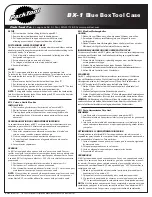
Rev. 1.50
146
����st ��� �01�
Rev. 1.50
14�
����st ��� �01�
HT66F0175/HT66F0185
A/D Flash MCU with EEPROM
HT66F0175/HT66F0185
A/D Flash MCU with EEPROM
Comparators
An analog comparator is contained only within the HT66F0185 device. The comparator function
offers flexibility via their register controlled features such as power-down, polarity select, hysteresis
etc. In sharing their pins with normal I/O pins the comparators do not waste precious I/O pins if
there functions are otherwise unused.
Comparator
Comparator Operation
The HT66F0185 device contains a comparator function which is used to compare two analog
voltages and provide an output based on their difference. Full control over the internal comparator is
provided via the control register CPC assigned to the comparator. The comparator output is recorded
via a bit in the control register, but can also be transferred out onto a shared I/O pin. Additional
comparator functions include output polarity, hysteresis functions and power down control.
Any pull-high resistors connected to the shared comparator input pins will be automatically
disconnected when the comparator is enabled. As the comparator inputs approach their switching
level, some spurious output signals may be generated on the comparator output due to the slow
rising or falling nature of the input signals. This can be minimised by selecting the hysteresis
function which applies a small amount of positive feedback to the comparator. Ideally the
comparator should switch at the point where the positive and negative inputs signals are at the same
voltage level. However, unavoidable input offsets introduce some uncertainties here. The hysteresis
function, if enabled, also increases the switching offset value.
Comparator Interrupt
The comparator possesses its own interrupt function. When the comparator output changes state,
its relevant interrupt flag will be set, and if the corresponding interrupt enable bit is set, then a jump
to its relevant interrupt vector will be executed. Note that it is the changing state of the COUT bit
and not the output pin which generates an interrupt. If the microcontroller is in the SLEEP or IDLE
Mode and the Comparator is enabled, then if the external input lines cause the Comparator output to
change state, the resulting generated interrupt flag will also generate a wake-up. If it is required to
disable a wake-up from occurring, then the interrupt flag should be first set high before entering the
SLEEP or IDLE Mode.
Programming Considerations
If the comparator is enabled, it will remain active when the microcontroller enters the SLEEP or
IDLE Mode, however as it will consume a certain amount of power, the user may wish to consider
disabling it before the SLEEP or IDLE Mode is entered. As comparator pins are shared with normal
I/O pins, the I/O registers for these pins will be read as zero (port control register is “1”) or read as
port data register value (port control register is “0”) if the comparator function is enabled.
















































